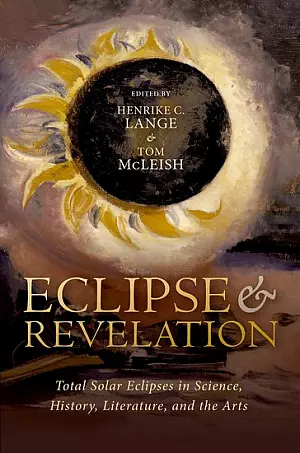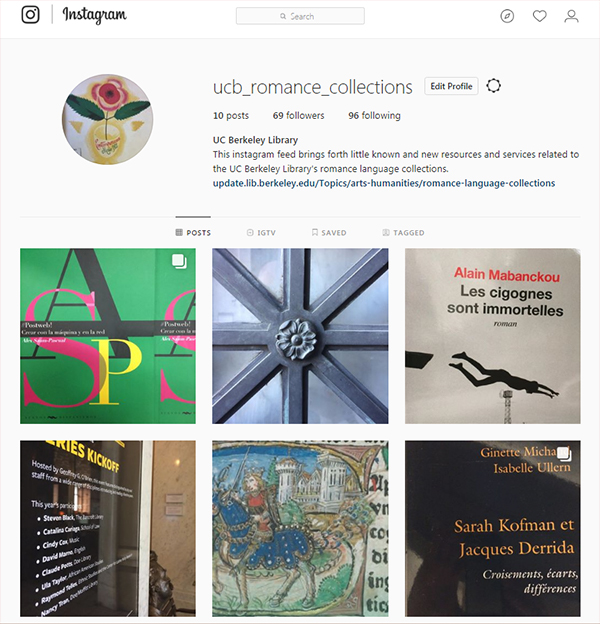Tag: Exhibits
Pop-up Exhibit: Eclipse & Revelation: Total Solar Eclipses in Science, History, Literature, and the Arts
Eclipse & Revelation: Total Solar Eclipses in Science, History, Literature, and the Arts
In collaboration with the Earth Sciences & Map Library, Art History/Classics Library, Art History and Astronomy departments, this pop-up exhibit will feature maps and materials inspired by the April 8, 2024 Total Solar Eclipse and “Eclipse & Revelation,” a newly published book by Henrike Lange which shows total solar eclipses from the interdisciplinary perspectives of the sciences, arts, humanities, history, and theology.
Join us to explore the representation of eclipses through maps, images, music, and film.
More information, see the event calendar, https://events.berkeley.edu/Library/event/239296-eclipse-revelation-total-solar-eclipses-in, and the online guide: https://guides.lib.berkeley.edu/mapsandmore/eclipse2024
Eclipse & Revelation: Total Solar Eclipses in Science, History, Literature, and the Arts
Edited by: Henrike C. Lange and Tom McLeish
Exhibit organizers:
Henrike C. Lange, Associate Professor, History of Art department
Lynn Cunningham, Art Librarian
Sam Teplitzky, Open Science Librarian
Exhibit – Indonesia: Spectacles of Small-scale Gold Mining
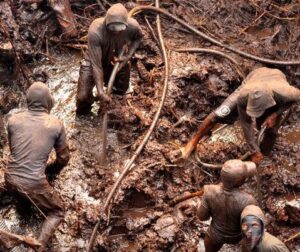
Indonesia: Spectacles of Small-scale Gold Mining, is now available online. Hosted by UC Berkeley’s Environmental Design Library, Professor Nancy Peluso’s photography exhibit explores gold extraction — and the people who live from it — in the West Kalimantan region of Indonesian Borneo. More than 100 high resolution images taken between 2014 and 2016 provide graphic insight into the daily work, tools and lives of the men and women who make their livelihoods in the Bornean gold fields. This exhibit is one of more than 50 exhibits in the multi-venued Extraction: Art on the Edge of the Abyss project.
Library Prize Exhibit Fall 2019 about Female Stationers
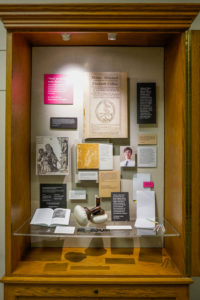
“I held the work of female printers like Elizabeth Cellier, one of my case studies. In doing so, I discovered small details that reshaped my thesis.” – Claire Danna
This reflection came after Claire Danna completed “And as to my own Sex”: The Networks and Rhetoric of Unity Between Female Stationers in the 17th Century, for which she earned the prestigious 2019 Charlene Conrad Liebau Library Prize for Undergraduate Research, an annual prize awarded to students who have completed exceptional research and made significant use of the Library’s resources. Claire wrote her paper for her Honors Research Seminar (English H195A and H195B) under the advisement of Professor Janet Sorensen.
Claire’s paper is the subject of this semester’s rotating Library Prize Exhibit, located on the second floor of Doe Library between the Heyns Reading Room and the Reference Hall. Drawing on texts in the Main Stacks and resources from the Bancroft Library, the exhibit showcases key texts used by Danna as she explored the experiences of women printers in the sixteenth and seventeenth centuries. The exhibit includes: a digitized replica of the title page of Elizabeth Cellier’s Malice Defeated (1680); a modern laser cut depicting Cellier’s trial created by Annalise Phillips, the Library’s Maker Education Service Lead; a composing stick with historically appropriate text set by Les Ferriss, Master Printer; and Claire’s notebook and notes used to keep track of her sources and their connections. The exhibit was co-curated by Nicole Brown, Head, Instruction Services Division and Gisele Tanasse, both members of the Library Prize Committee and designed by Aisha Hamilton, the Exhibits and Environmental Graphics Coordinator. The exhibit will be up until April 2020.
Special thanks to:
Annalise Phillips, Maker Education Service Lead, who you can find at the Moffitt Makerspace
Les Ferriss, Master Printer, who teaches The Hand-Printed Book in Its Historical Context
Peter Hanff, and the staff of the Bancroft Library
Library Imaging Services staff, who digitize the Library’s treasured collections
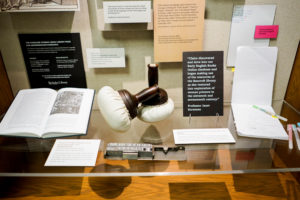
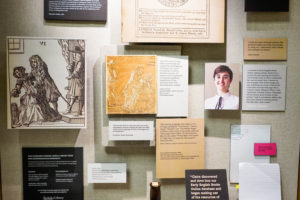
The Charlene Conrad Liebau Library Prize for Undergraduate Research is awarded annually, and submissions are now open to all undergraduates until April 16, 2020. In addition to a monetary award of $750 for lower-division winners and $1000 for upper-division winners, the recipients of the Library Prize publish their work in eScholarship, and two will be featured in an exhibit in the Library. Find out more information, including how to apply.
Learn about the rest of this year’s winners and honorable mentions. Be sure to stop by the exhibit to see Claire’s work in person. You can replicate Claire’s research journey by searching Early English Books Online (EEBOO).
New Display Case in Environmental Design Library
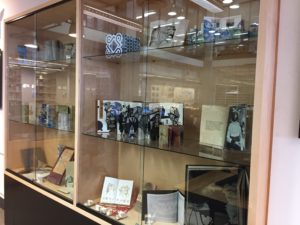
With the help of Semar Prom and the College of Environmental Design Fabrication Shop staff, the Environmental Design Library has installed a new display case. The new case will allow for informal display of artists’ books, the library’s rare books, and timely topical information relevant to the college. Currently on display are items from the upcoming 10/25/19 Hands On Artists’ Book event featuring newly acquired artists’ books.
Library Prize Exhibit: Sympathy for the Loss of a Comrade
By Adam Clemons
In early July of 1873, a soldier named John Taylor reported to the hospital at Fort Stockton, Texas complaining of illness. The fort’s doctor, Peter J.A. Cleary, refused to treat him. Instead, he sent Taylor to the guard house as punishment. Three days later John Taylor was dead. Taylor’s fellow soldiers, incensed by what they believed to be racially motivated medical neglect by Cleary, drafted a statement detailing the patterns of abusive treatment of Taylor and calling for a formal investigation into his death. The officers at Fort Stockton responded by placing twenty-one of the soldiers who signed the letter, mostly non-commissioned officers, on trial for attempted mutiny. Though the charge was ultimately downgraded to a failure to follow proper procedure, twenty out of the twenty-one charged soldiers were dishonorably discharged and sent to prison in Huntsville, Texas.
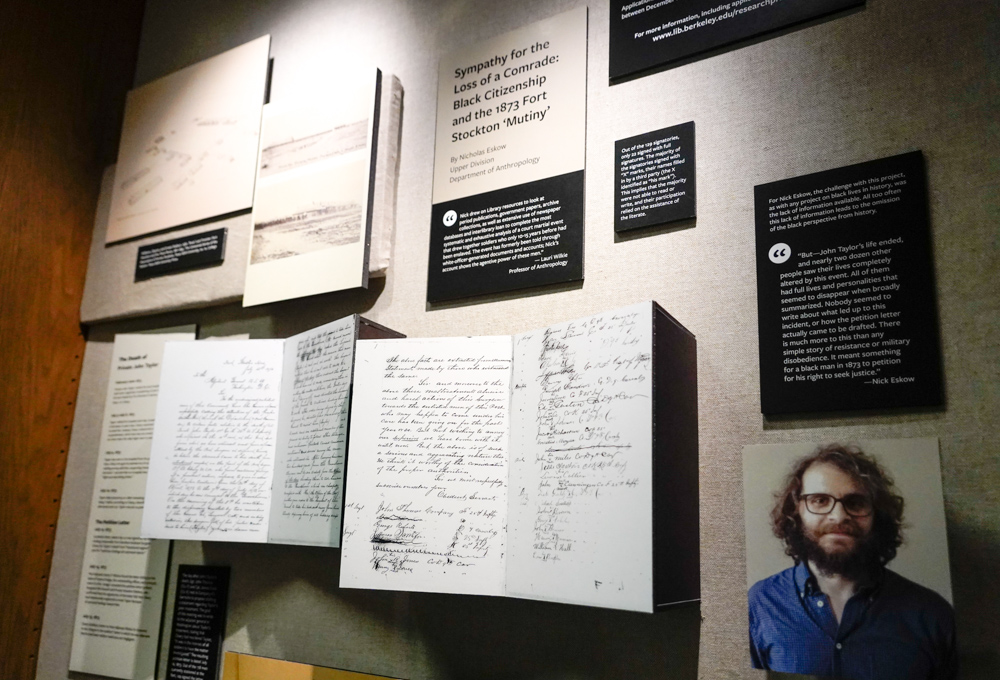
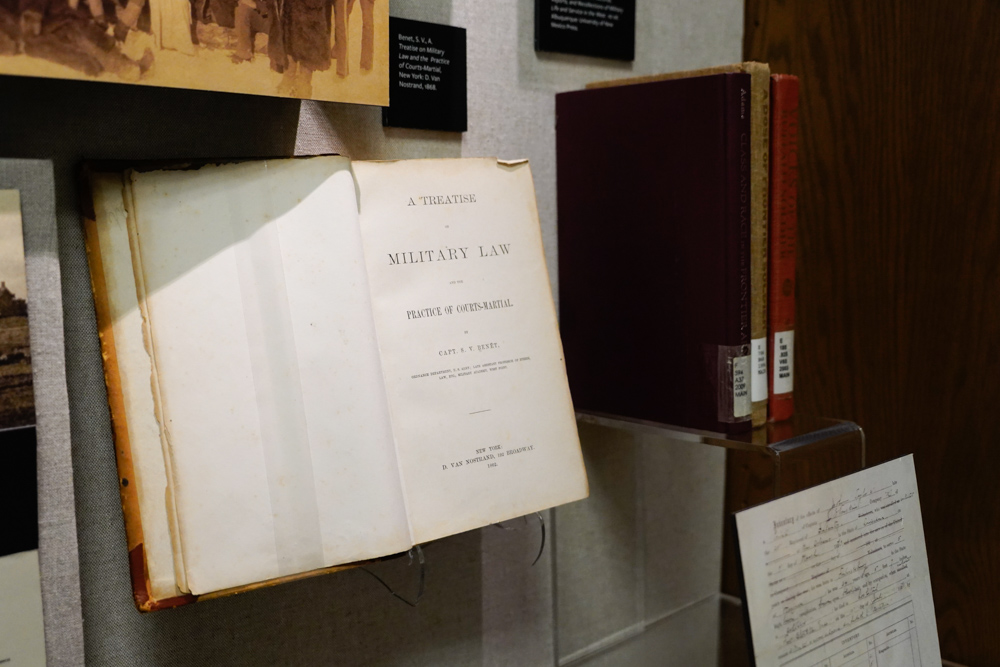
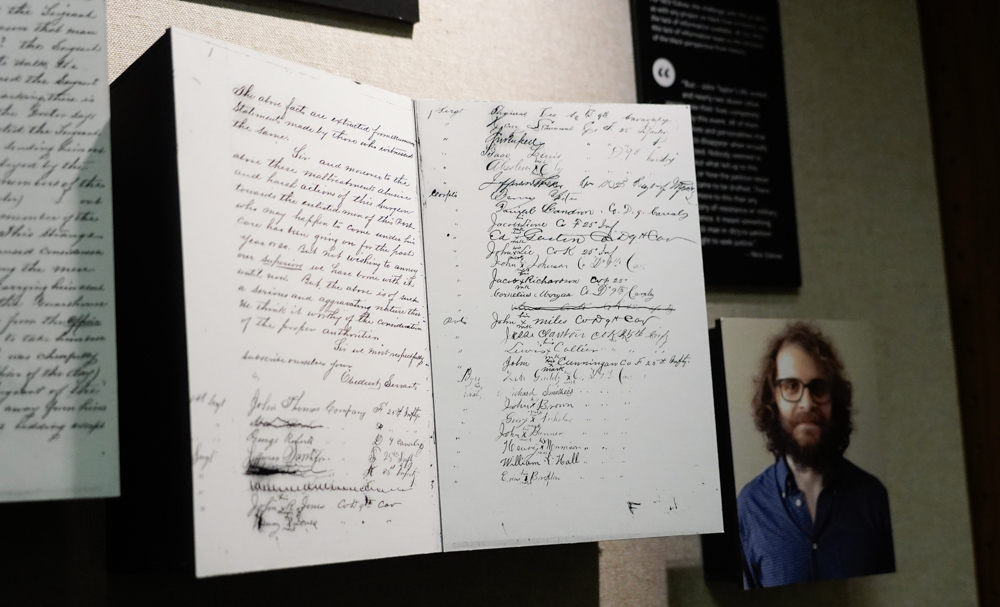
Photos by Jami Smith for the UC Berkeley Library
In “Sympathy for the Loss of a Comrade: Black Citizenship and the 1873 Fort Stockton ‘Mutiny’,” Nick Eskow successfully reconstructed the events at Fort Stockton using library resources such as period publications, government documents, newspapers, and archival collections. Where others have relied on the accounts of the white officers to tell this story, Eskow sought out the perspective of the black soldiers through extensive research and analysis of the historical record. Eskow’s exceptional effort earned him the prestigious 2018 Charlene Conrad Liebau Library Prize for Undergraduate Research, an annual prize awarded to students who have done high-level, course-based research while demonstrating significant use of the Library’s resources.
Eskow’s research is also the subject of the rotating Library Prize Exhibit, located on the second floor of Doe Library between Heyns Reading Room and Reference Hall. Drawing on collections held at UC Berkeley, Fort Stockton, Texas, and the National Archives in Washington, D.C., the exhibit displays some of the documents Eskow used to capture the voice of the black soldiers including a digital version of the original petition letter, which includes a few pages of soldiers’ signatures to show the “X” marks by many names. These marks, meant to stand for “his mark,” indicates that many of the soldiers, who were former slaves, could not sign their names and implies that they could neither read nor write. Other documents on display include an 1868 copy of S.V. Benet’s A Treatise on Military Law and Practice of Courts-Martial, which was repeatedly cited by the white officers at Fort Stockton to support their charge against the black soldiers as well as a detailed timeline of the events at Fort Stockton from the death of John Taylor to the sentencing of the twenty soldiers who signed the petition letter.
The Charlene Conrad Liebau Library Prize for Undergraduate Research is awarded annually to UC Berkeley undergraduates. Any course-based research projects completed at UC Berkeley during the award year are eligible. In addition to a monetary prize for winners – $750 for lower division and $1000 for upper division – award recipients as well as honorable mentions will publish their research in eScholarship, the University of California’s open access publishing platform. Two of the winners are also be featured in an exhibit in the Library.
The exhibit – which was curated by Adam Clemons, Librarian for African and African American Studies, and designed by Aisha Hamilton, Exhibits and Environmental Graphics Coordinator – will be up until November 2019.
Maps of the Southern Border Pop-Up Exhibit
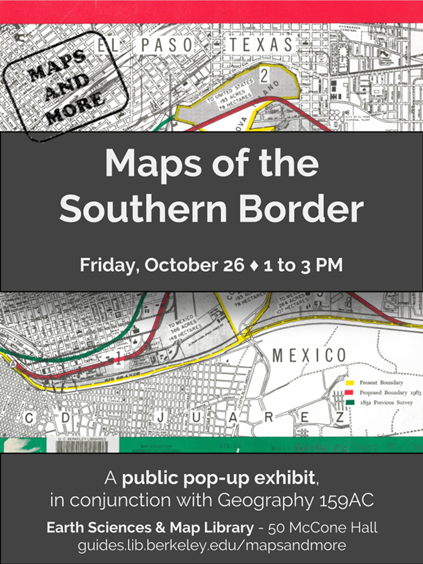
Please join us next Friday for a public pop-up exhibit featuring maps of the US/Mexico border:
Maps of the Southern Border
Friday, October 26 | 1 – 3 PM
50 McCone Hall
Presented in conjunction with Geography 159AC: The Southern Border.
New Instagram feed for Romance Language Collections
The new Romance Language Collections Instagram feed brings forth little known and new resources and services in the UC Berkeley Library. Once you start following you’ll instantly receive early notices of new books, e-resources, exhibits, readings and more through your smartphone.
Exhibit: Immigration, Deportation and Citizenship, 1908-2018: Selected Resources from the IGS and Ethnic Studies Libraries
 “Immigration, Deportation and Citizenship, 1908-2018: Selected Resources from the IGS and Ethnic Studies Libraries” contains items from the Ethnic Studies Library and the Institute of Governmental Studies Library addressing historical attitudes and policy around immigration, deportation, and citizens’ rights, as well as monographs and ephemera relating to current events.
“Immigration, Deportation and Citizenship, 1908-2018: Selected Resources from the IGS and Ethnic Studies Libraries” contains items from the Ethnic Studies Library and the Institute of Governmental Studies Library addressing historical attitudes and policy around immigration, deportation, and citizens’ rights, as well as monographs and ephemera relating to current events.
IGS Library
109 Moses Hall
Mon.-Fri.1-5pm
Please see the accompanying Library Guide for a key to the exhibit as well as additional materials:
New exhibit: Immigration, Deportation and Citizenship, 1908-2018

Immigration, Deportation and Citizenship, 1908-2018: Selected Resources from the IGS and Ethnic Studies Libraries” contains items from the Ethnic Studies Library and the Institute of Governmental Studies Library addressing historical attitudes and policy around immigration, deportation, and citizens’ rights, as well as monographs and ephemera relating to current events.
See accompanying Library Guide.
Location: IGS Library – 109 Moses Hall
Dates: Fall semester 2018
Open hours: Monday – Friday, 1pm-5pm
Event: Opening of Library Exhibit ” “Vida y Resistencia en el Territorio Mapuche, Chile”
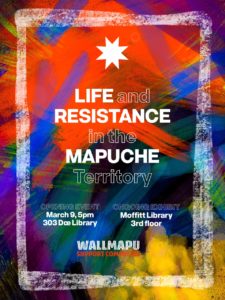 This Friday, March 9, the Library will open an exhibit co-sponsored by the CLAS working group, the Wallmapu Support Committee. “Vida y Resistencia en el Territorio Mapuche, Chile” (Life and Resistance in the Mapuche Territory) can be viewed on the 3rd floor of Moffitt Library from March 9 – June 30, 2018.
This Friday, March 9, the Library will open an exhibit co-sponsored by the CLAS working group, the Wallmapu Support Committee. “Vida y Resistencia en el Territorio Mapuche, Chile” (Life and Resistance in the Mapuche Territory) can be viewed on the 3rd floor of Moffitt Library from March 9 – June 30, 2018.
The opening event is scheduled Friday from 5 pm – 6:30 pm in 303 Doe Library. There will be a short musical performance and some presentations by Chilean and Mapuche community members from the Bay Area.
